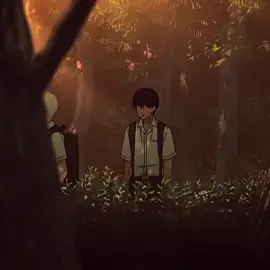Ziggy
Region: US
Monday 25 August 2025 01:14:35 GMT
924172
219594
1445
69833
Music
Download
Comments
1AO Kanyon :
Animate this one next
2025-08-25 22:14:43
2632
tristan :
this is cannon by the way
2025-08-25 13:12:20
10116
SILVAfitnss :
A ver el render completo
2025-08-27 22:13:16
0
MAD IT :
2025-08-25 21:18:22
1512
MUSIC LOVER (: :
Did you animate this
2025-08-25 06:01:22
7529
Barlex :
an animator...?
2025-08-26 02:58:39
259
Kobe_fan824 :
Imagine how big that basketball is
2025-08-25 22:16:36
571
Chicha :
Basketball zero:
2025-08-27 18:53:51
3
TC-art :
chrollo... don't do that...
2025-08-27 01:19:41
1
Ambassador to Lithuania :
How t Rex supposed to guard look at his wingspan
2025-08-25 22:36:05
649
r :
just lemme syd😭😭
2025-08-26 08:45:42
2
Kakarot_der_ssj :
HELL YEAH
2025-08-25 08:42:10
1494
️ :
no more ideas for basketball zero
2025-08-27 05:28:59
0
Fw.Divine :
Next Basketball Zero style 😭
2025-08-25 18:39:59
34
️ :
2025-08-25 12:04:36
73
Ayahsd :
Trex is a bad defender bro he only got 3 pointers💔
2025-08-25 20:28:32
176
medz :
Dont give Chrollo any ideas now 💔
2025-08-26 04:57:49
28
blackhaw03 :
RUN AWAY BEFORE THEY COME, DONT LET THEM KNOW U R AN ANIMATOR
2025-08-28 01:32:54
0
フィレンツェ :
2025-08-26 05:38:20
2
morgan :
Heyyyyyy
2025-08-28 00:06:00
2
𖣂هاريس𖣂🃏 :
Another animater…
2025-08-25 23:55:51
11
☆ :
!!!!!!
2025-08-25 10:42:14
65
Zayne⚽️🥊⚡️ :
All T-Rex saw
2025-08-27 08:28:58
6
sethr.09 :
The imagined clash between a towering Tyrannosaurus rex and Godzilla clutching a basketball is a scene where prehistoric ferocity meets modern absurdity. The contrast in imagery immediately creates a sense of both awe and humour. The T. rex, often described with words like “primordial,” “savage,” and “predatory,” embodies raw natural power. By contrast, Godzilla, a towering kaiju born from nuclear fear, holding a basketball—a human-made object tied to sport, play, and culture—becomes strangely humanised. The basketball itself is a powerful symbol. In Godzilla’s colossal hands, it transforms from a small toy into a fragile planet-like orb, suggesting themes of dominance and control. The roundness of the ball may even echo the earth itself, placing Godzilla in the position of holding worlds, while the T. rex, jaws agape, yearns to claim what it cannot reach. The imagery of scale—tiny ball, vast claws, gaping jaws—heightens the tension, while the humour of the situation undercuts it. The word choice surrounding movement also matters. If Godzilla is “dribbling” the ball, the verb feels playful and casual, mocking the T. rex’s more violent “snapping” or “thrashing.” This contrast in diction paints Godzilla as oddly sophisticated, engaging in sport rather than survival, while the T. rex remains trapped in its instinctive hunger. The result is an almost satirical commentary on evolution: Godzilla, though monstrous, embodies something closer to civilisation than the dinosaur ever could. From a tonal perspective, the scene balances awe with comedy. The towering shadows of reptilian giants give the passage grandeur, yet the sheer ridiculousness of a basketball undermines it, creating a shifting mood between menace and amusement. This tonal duality could be read as a reflection of humanity’s tendency to find entertainment in destruction—the blending of sport and violence. Ultimately, the surreal image of Godzilla holding a basketball against a raging T. rex creates a vivid tableau where prehistoric chaos collides with modern play. Through imagery, symbolism, and contrast, the scene captures not just a battle of beasts but a collision of eras—nature versus culture.
2025-08-25 14:18:22
9
Noah :
This is some what possible in Fortnite 😭
2025-08-26 16:41:17
1
To see more videos from user @explodingrats3, please go to the Tikwm
homepage.





